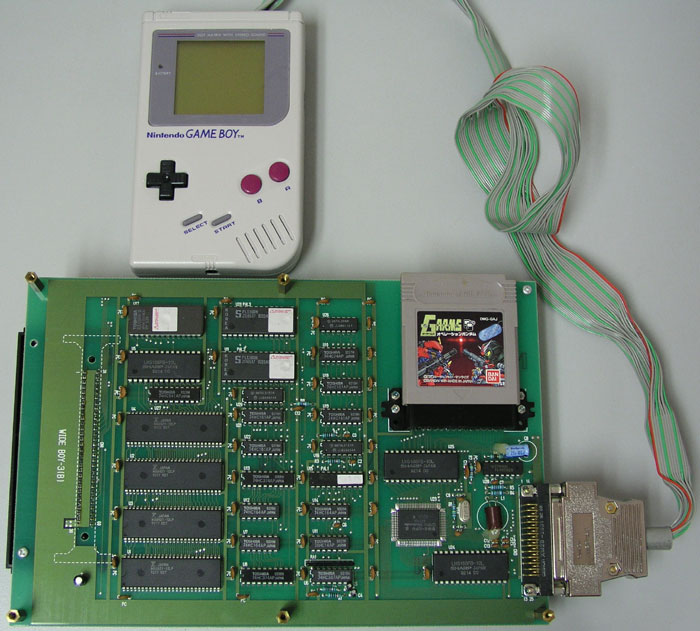You can see a ribbon cable going into the game boy itself, and a small electronics board - but I think it's just the volume controls. It's not at all clear how this device works!
A separate kiosk/external display was based on the NES, it uses a board called the Demo Vision (thanks to Retrogamer72 of nintendoage for the tip!):
 |
| from assembler games thread |
and here is a picture of the back of the modified () gameboy that you use it with:
It's not clear how the gameboy has been modified, maybe it's just an extra long ribbon cable soldered on?
To ease the strain on the eyes of developers working and testing a game, there was the wideboy:
 |
| picture from the handheldmuseum |
A similar type of thing called the wideboy64 exists, letting you play game boy color games on an N64!
 |
| picture from chrismcovell.com/wideboy64 |
 |
| picture from chrismcovell.com/gbbooster |
A really cool hack someone did is interpreting the game boy signals from the ribbon cable using a microcontroller (but I have read that an FPGA is much more suitable) and then converting it into data for an oscilloscope to display:
See his blog here
- http://www.flashingleds.net/gameboyLCD/gameboyLCD.html
- http://www.flashingleds.net/nintendoscope/nintendoscope.html
Another amazing hack, A gigantic LED matix being driven by a real gameboy through an FPGA:























